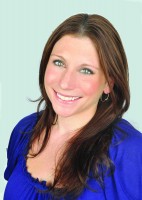Parenting Pep Talk: A Quick Guide to Baby Sleep Training Methods

New parents have lots of decisions to make about how to raise their children, and with so much advice out there it can be tough to know what is right. Finding the right way to help your baby to sleep is one of those tough decisions. Should he cry it out? Should she be comforted until sound asleep? Many experts and parents disagree. In the end most people find that one size doesn’t fit all. Here is a quick guide to the different approaches out there so you can be informed and can further research what sounds right for you and your family.
The Dr. William Sears Method, The Baby Sleep Book: Dr. Sears believes parents should be patient with babies and allow them to learn to sleep on their own time. He recommends developing positive associations with bedtime by using physically close activities like rocking and patting while getting your baby to sleep, and he even suggests co-sleeping (sharing a bed with your baby) as a tactic. Letting babies cry it out, according to Sears, teaches babies to associate bedtime with negativity, a pattern that can last as children get older.
The Elizabeth Pantley Method, The No Cry Sleep Solution: Pantley also discusses the power of sleep associations and cautions parents against letting children fall completely asleep while nursing. Once they make that association, she says, babies have a hard time falling asleep any other way. Pantley suggests engaging in physically close activities such as rocking and feeding while getting your baby drowsy and then putting them down before they fall asleep. Parents should immediately attend to their baby when he cries and then repeat the cycle.
The Tracy Hogg Method, Secrets of the Baby Whisperer: Hogg, another proponent of positive sleep associations, cautions against the use of “props” such as nursing or rocking to get a baby to sleep. She believes parents should go to their baby when he cries and pick him up and put him down as many times as necessary, a method she calls the Pick Up/Put Down method. She also believes that each day should be structured with the E.A.S.Y routine, which involves Eating, an Activity, and then Sleep, which allows time for You. Hogg is thought to have a philosophy that falls between the “no cry” methods and the “cry-it-out” methods.
The Richard Ferber Method, Solve Your Baby’s Sleep Problems: Ferber believes that you can train your baby to soothe himself to sleep once he is physically and emotionally ready at about 3 to 5 months. His technique is called “progressive waiting” and involves first a nurturing and warm nighttime routine followed by putting your baby in bed (while awake) and letting her cry it out for longer and longer periods of time. Ferber’s theory suggests that after a short while, babies will learn to soothe themselves and fall asleep. They will learn that crying earns nothing more than a quick check-in from mom or dad.
You can see that recommendations run the gamut from “cry it out” to “hug it out.” Pick a method that feels right to you and try it out. Give it time, but if it doesn’t work you can consider other options. Each method comes with advantages and controversy so do what’s right for you and your family and seek help if necessary.
Dr. Jaime Black is a licensed psychologist practicing in Westchester and New York City. Jaime works with high-functioning individuals on the autism spectrum, doing psychotherapy, conducting evaluations, and facilitating various socialization groups including an improv social skills group. Visit www.spectrumservicesnyc.com, e-mail JaimeBlackPsyD@gmail.com or call (914)712-8208.

Examiner Media – Keeping you informed with professionally-reported local news, features, and sports coverage.
